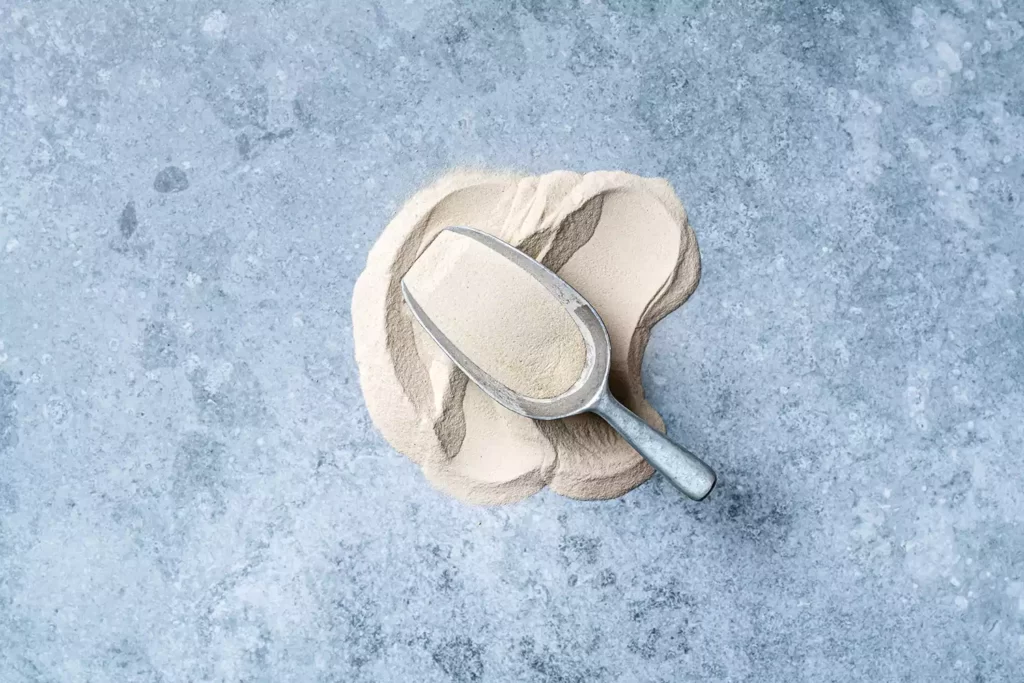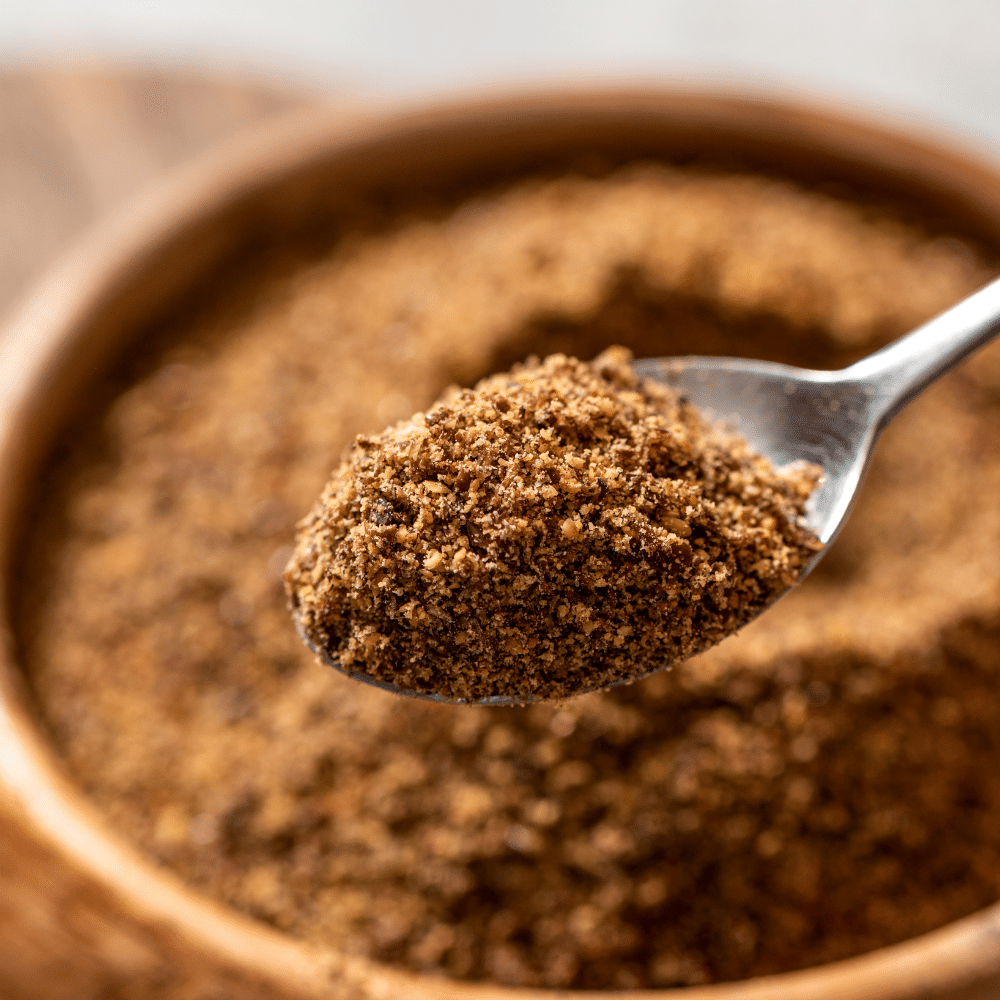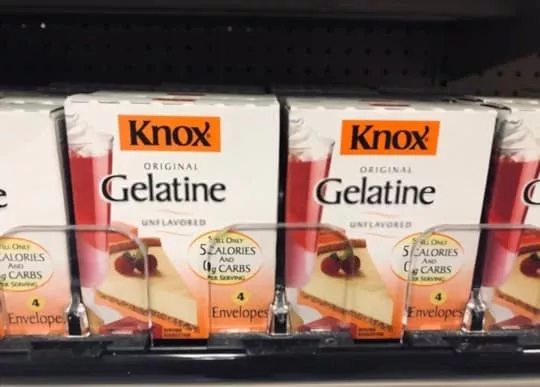Are you looking for a way to thicken and stabilize your recipes without using guar gum?
Guar gum is a common ingredient used in baking, sauces, and dressings.
It helps give recipes that perfect consistency and texture we all love.
But what if you don’t have access to guar gum or are trying to avoid it for health reasons?
Don’t worry – there are plenty of alternatives out there!
In this article, I will be sharing the 11 best substitutes for guar gum so that you can still enjoy the same great flavors without having to use this controversial additive.
What is Guar Gum?

Guar gum is a natural thickening agent derived from the guar bean, which is native to India and Pakistan.
It’s used in many food products as an emulsifier, stabilizer, and thickener.
Guar gum has eight times the water-thickening potency of cornstarch, so it can be used in much smaller quantities than other thickeners.
It also helps keep ingredients suspended in liquids and prevents them from separating out or settling at the bottom of a container.
In addition to its use as a food additive, guar gum is also found in cosmetics and pharmaceuticals due to its ability to bind water molecules together.
In these applications, it helps create stable mixtures that are resistant to separation over time.
Guar gum is also used industrially for drilling muds and hydraulic fracturing fluids because of its ability to increase viscosity without increasing density or changing pH levels significantly.
The 11 Best Substitutes For Guar Gum
Guar gum is a common ingredient used in baking and cooking, but it can be hard to find in some places.
If you’re looking for an alternative, here are eleven substitutes that will still produce the same results:
1 – Xanthan Gum

Xanthan gum is a natural polysaccharide produced by the fermentation of glucose, sucrose, or lactose.
It is used as a thickening agent and stabilizer in many foods, including salad dressings, sauces, ice cream, yogurt and beverages.
How to Use
Xanthan gum can be added directly to liquids or dry ingredients such as flour.
When using it in liquid form it should be mixed with cold water first before adding it to the rest of the ingredients.
If you are using xanthan gum in baking recipes it can be added directly into the dry ingredients before mixing them together with wet ingredients.
It can also be used to thicken sauces and soups without having to use any additional heat.
For best results when using xanthan gum make sure that all other ingredients have been combined properly before adding it in order for the desired consistency to be achieved.
2 – Agar Agar Powder

Agar agar powder is a natural gelling agent made from red algae.
It is a vegan alternative to gelatin, and can be used to thicken, stabilize, and gel foods such as ice cream, puddings, jams, jellies, custards and more.
How To Use
Agar agar powder should be dissolved in hot liquid before using it in recipes.
For the best results use one tablespoon of agar agar powder for every cup of liquid.
Heat the mixture until it boils and then reduce heat and simmer for 5 minutes or until all the powder has been dissolved completely.
Once cooled slightly use this mixture in place of gelatin in your recipe.
3 – Arrowroot Powder

Arrowroot powder is a white, starchy powder made from the root of the arrowroot plant.
It is used as a thickener in cooking and baking and can be substituted for cornstarch or flour.
How To Use
Arrowroot powder can be used to thicken sauces, gravies, soups, stews, and puddings.
It works best when added at the end of cooking since it will break down if boiled for too long.
To use arrowroot powder for thickening purposes, mix it with an equal amount of cold liquid first before adding it to hot dishes.
This helps prevent clumping and ensures that the mixture distributes evenly throughout the dish.
For every tablespoon of arrowroot powder you add to a recipe, you should expect about 1/4 cup of additional thickness in your final product.
4 – Ground Flaxseed

Ground flaxseed is a type of seed that has been ground into a powder.
It is high in fiber and omega-3 fatty acids, which can help reduce inflammation and improve heart health.
Flaxseed also contains lignans, which are plant compounds with antioxidant properties.
How To Use
Ground flaxseed can be added to smoothies, oatmeal, yogurt, baked goods, salads and more for an extra boost of nutrition.
It can also be used as a substitute for eggs in vegan baking recipes by combining one tablespoon of ground flaxseed with three tablespoons of water per egg called for in the recipe.
For best results, store ground flaxseeds in the refrigerator or freezer to maintain their freshness.
5 – Chia Seeds

Chia seeds are small, black, and white seeds that come from the Salvia hispanica plant.
They are a good source of fiber and omega-3 fatty acids.
Chia seeds can be eaten raw or cooked, and they have a mild nutty flavor.
How To Use Chia Seeds
Chia seeds can be added to smoothies for an extra boost of protein and fiber.
They can also be used as an egg substitute in vegan baking recipes.
When soaked in liquid, chia seeds form a gel-like consistency which makes them perfect for use as a thickener in sauces, soups, and puddings.
Ground chia seed meal is often used to make gluten-free breads and other baked goods.
6 – Locust Bean Gum
Locust bean gum is a food additive derived from the carob tree.
It is used as a thickener, emulsifier, and stabilizer in many processed foods, such as ice cream and yogurt.
The powdery substance helps to keep ingredients from separating or clumping together.
How To Replace Guar Gum With Locust Bean Gum
If you are looking to replace guar gum with locust bean gum, it is important to note that they are not interchangeable in terms of their properties and effects on food products.
While both gums can be used for similar purposes, locust bean gum has more binding power than guar gum and will create a thicker texture when added to recipes.
When replacing guar gum with locust bean gum in recipes, use 1/2 teaspoon of locust bean gum for every 1 tablespoon of guar gum called for in the recipe.
7 – Tapioca Starch

Tapioca starch is a white, powdery substance derived from the cassava root.
It’s often used as a thickening agent in recipes that require some extra body and creaminess.
It has a neutral flavor, so it won’t affect the taste of your dish.
How to Replace Guar Gum With Tapioca Starch
Guar gum and tapioca starch are both effective thickeners, but they have different properties when it comes to their ability to bind ingredients together.
To replace guar gum with tapioca starch, use half the amount of tapioca starch for every teaspoon of guar gum called for in the recipe.
For example, if you need 1 teaspoon of guar gum, use ½ teaspoon of tapioca starch instead.
You may find that you need to adjust the amount slightly depending on what you’re making; just be sure not to add too much at once or else your final product could become too thick!
8 – Potato Starch

Potato starch is a white powder made from the starch of potatoes.
It is used as a thickening agent in many recipes, and it has a neutral flavor that won’t change the taste of your food.
How To Replace Guar Gum With Potato Starch
When using potato starch as a substitute for guar gum, you will need to use twice as much potato starch as you would guar gum.
For example, if your recipe calls for one teaspoon of guar gum, then use two teaspoons of potato starch instead.
This ratio should be followed when replacing any other thickeners with potato starch.
Additionally, you should mix the potato starch with cold water before adding it to your recipe so that it can dissolve evenly and not clump up.
9 – Cornstarch

Cornstarch is a starch derived from the endosperm of corn.
It is commonly used as a thickening agent in sauces, soups, and stews.
It has twice the thickening power of flour, so it can be used to thicken liquids without adding additional flavor or texture.
How To Replace Guar Gum With Cornstarch
The general rule for replacing guar gum with cornstarch is to use twice as much cornstarch as you would guar gum (1 teaspoon of guar gum = 2 teaspoons of cornstarch).
Start by adding 1 teaspoon (4 grams) of cornstarch for every 1 teaspoon (2 grams) of guar gum that your recipe calls for.
If the mixture isn’t thick enough after stirring, add more cornstarch in small increments until you reach the desired consistency.
10 – Gelatin

Gelatin is a protein produced from animal collagen, which is the main component of connective tissues.
It is often used as a gelling agent in food and other products.
It can be found in powdered or sheet form, and it comes in various grades depending on its use.
How To Replace Guar Gum With Gelatin
When replacing guar gum with gelatin, you’ll need to use a ratio of 1 teaspoon of gelatin for every 2 teaspoons of guar gum called for in the recipe.
You should also keep in mind that gelatin will not provide the same texture as guar gum does, so if you are making something like ice cream or sorbet, you may want to adjust your expectations accordingly.
When using gelatin as a replacement for guar gum, it’s important to make sure that it is fully dissolved before adding it to your recipe; otherwise, it won’t have the desired effect.
To dissolve the gelatin, add it to cold liquid first and then heat until just boiling before stirring until completely dissolved.
11 – Psyllium Husk

Psyllium husk is a dietary fiber derived from the Plantago ovata plant.
It’s most commonly used in baking and cooking as an egg replacement and thickening agent.
The husks are ground into a powder that can be added to recipes, or taken as a supplement for health benefits.
How To Replace Guar Gum With Psyllium Husk
When replacing guar gum with psyllium husk, use 1 teaspoon of psyllium husk for every tablespoon of guar gum called for in the recipe.
For example, if your recipe calls for 2 tablespoons of guar gum, you would use 4 teaspoons of psyllium husk instead.
You may need to adjust the amount depending on how much liquid is in your recipe—add more if it seems too dry or less if it seems too wet.
Additionally, when using psyllium husk as an egg replacer, mix one tablespoon with three tablespoons of water and let sit for five minutes before adding to the batter.
Conclusion
In conclusion, guar gum is an effective thickener and binder that can be used in many recipes.
However, if you don’t have guar gum on hand, there are plenty of other ingredients that can serve as a good substitute.
The best substitutes for guar gum are xanthan gum, agar agar powder, arrowroot powder, ground flaxseed, chia seeds, locust bean gum, tapioca starch, potato starch, cornstarch, gelatin, and psyllium husk.
Each of these ingredients has a different texture and flavor profile, so you can experiment with different combinations to find the perfect substitute for your recipe.
With so many options, you’ll never have to worry about going without guar gum again.

The 11 Best Substitutes For Guar Gum
Ingredients
- Xanthan Gum
- Agar Agar Powder
- Arrowroot Powder
- Ground Flaxseed
- Chia Seeds
- Locust Bean Gum
- Tapioca Starch
- Potato Starch
- Cornstarch
- Gelatin
- Psyllium Husk
Instructions
- Pick your favorite substitute from the list above.
- Follow cooking directions for your selected substitute with the proper ratio of ingredients.
Jenny has always been passionate about cooking, and she uses her platform to share her joy of food with others. Her recipes are easy to follow, and she loves giving tips and tricks to help others create their own unique culinary creations.

